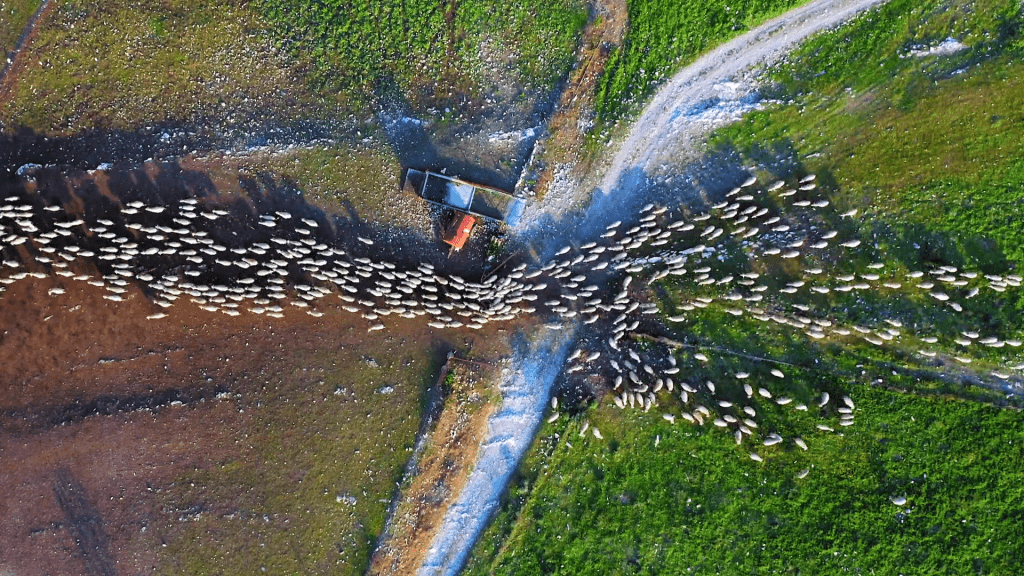What if I told you the coolest thing you’ll see today is sheep herding? Well, brace yourself. Almost like a fluid, this herd seems to flow through the pasture following its own soothing rhythm.
The video was captured by Haifa-based photographer Lior Patel, who has spent the better part of a year immersed in the world of sheep. He documented a single flock’s grazing process — a flock that has been managed by the same farmer and herder since 1985, and features over 1,000 sheep.
Shot with a drone, the timelapse footage shows the animals going through their daily routine of traveling 7 kilometers, through green pastures, dusty plains, or crossing a street. The shape-shifting flock is herded by a few border collies, which you can see circling the edges of the flock and making sure that no stragglers go awry.

“The first challenge is to understand the elasticity of the herd during the movement, its dispersal during grazing, and how it converges into one tight pack towards exit/return from pasture and crossing roads and paths,” Patel tells Colossal.

Patel told Colossal that he captured most scenes from a fixed camera position, with each shot showing around 4-7 minutes. He enjoys traveling through Israel, documenting not just the agricultural practices throughout the country, but also historic architecture.
For more of his aerial photos and videos, check out his site and Instagram.






